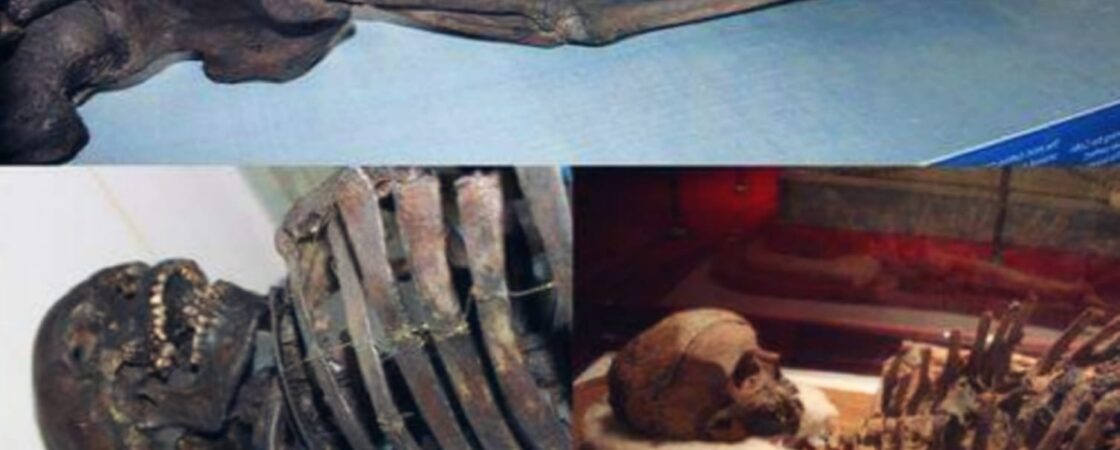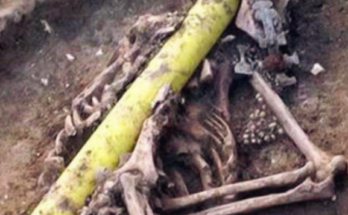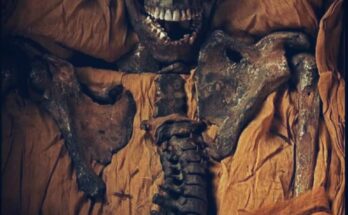The Gristhorpe Man is one of the most significant archaeological discoveries in Britain, offering a rare and extraordinary glimpse into Bronze Age life nearly 4,000 years ago. Unearthed in 1834 by William Beswick at Gristhorpe near Scarborough, North Yorkshire, this ancient skeleton was found remarkably preserved in a tree-trunk coffin, a unique burial practice of the time. The coffin, made from a hollowed-out oak tree, was sealed with a lid, keeping the body and its grave goods intact over millennia.

The preservation of Gristhorpe Man and the accompanying artifacts provides a wealth of information about Bronze Age funerary traditions, technology, and society.
Gristhorpe Man stood at about 6 feet tall, a stature that would have been imposing for his time. Analysis of his bones revealed he was an older man, likely in his 60s or 70s, and despite his age, he appeared to have led a relatively healthy life. Isotope analysis of his teeth suggested he consumed a diet rich in meat, possibly indicating his high status within the community. Additional examination of his bones showed that he may have suffered from arthritis, which was common among individuals of advanced age in ancient societies.
One of the most fascinating aspects of this discovery is the array of grave goods buried alongside Gristhorpe Man. Among the items were a bronze dagger, a bark container that may have held food or drink, and a flint tool, all indicating the importance of the individual and the belief in an afterlife. The bronze dagger, which was once adorned with organic materials such as wood or leather, is a particularly notable artifact, showcasing the advanced metalworking skills of the time.
Modern scientific methods, including radiocarbon dating and CT scans, have further illuminated details about Gristhorpe Man’s life and death. Analysis of his bones showed he had a strong, muscular frame, likely due to a physically demanding lifestyle. His skull bore evidence of a trepanation, a form of primitive surgery involving drilling a hole into the head. This has sparked debate among researchers about whether the procedure was an attempt to treat a medical condition or had ritualistic significance. Remarkably, he survived the surgery, as the bone had begun to heal.
The coffin itself, carved from a single oak tree, is one of the largest examples of a Bronze Age coffin in Britain. The craftsmanship of the coffin and the care taken in the burial process suggest that Gristhorpe Man was an individual of considerable importance, possibly a chieftain or elder of his community. His body had been wrapped in animal hide, further emphasizing the ritualistic nature of the burial.
Over the years, the analysis of Gristhorpe Man has continued to evolve as new technologies become available, making him one of the best-studied Bronze Age individuals in the world.
His remains are now housed at the Rotunda Museum in Scarborough, where they remain a subject of fascination for archaeologists and the public alike. The discovery of Gristhorpe Man continues to unravel the enigma of Britain’s prehistoric past, offering invaluable insights into the life, beliefs, and society of Bronze Age people.



